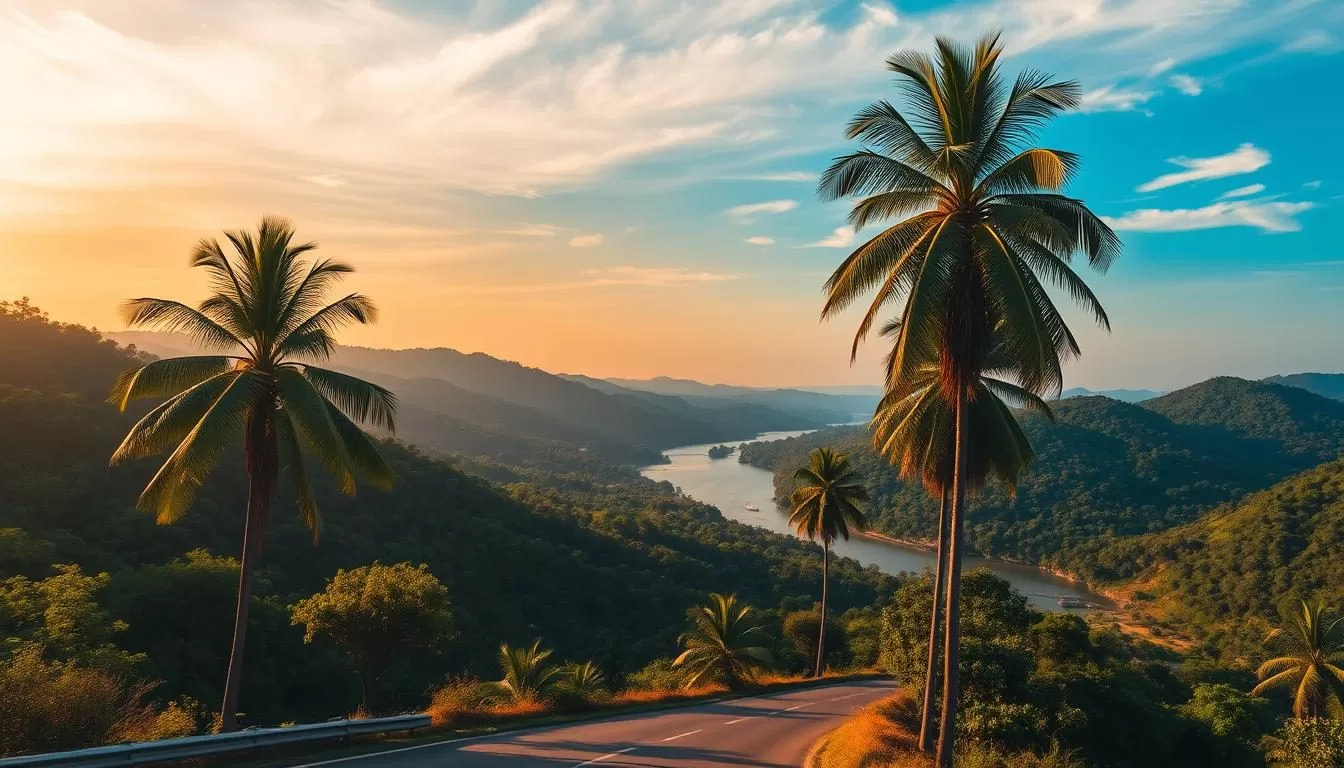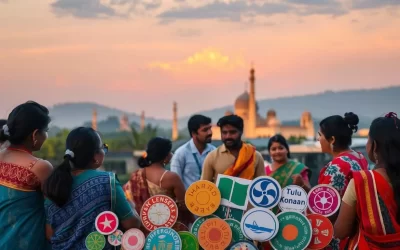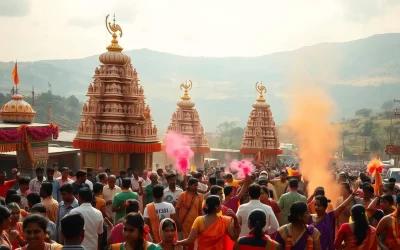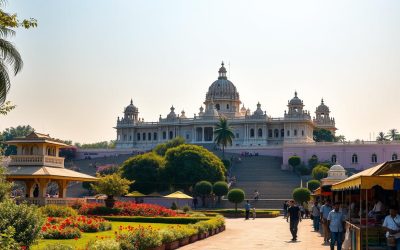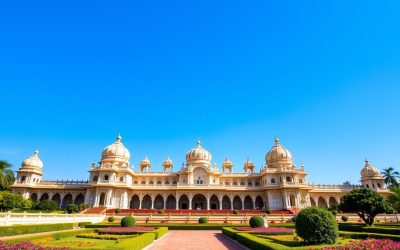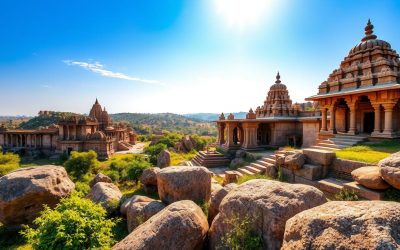When planning a trip to Karnataka, understanding the local climate is crucial. Karnataka, a state in southwestern India, boasts diverse landscapes, from the coastal beaches to the lush Western Ghats and historic plateaus. The state’s weather varies significantly across these regions, making the time of visit a critical factor for an enjoyable experience.
The state experiences three distinct seasons: winter (October-February), summer (March-May), and monsoon (June-September). Each season offers a unique experience, whether you’re interested in traveling during the monsoon, enjoying the pleasant winters, or exploring during the summer. By choosing the right months to visit, you can enhance your experience of Karnataka’s natural beauty and cultural heritage.
This guide will help you understand the climate patterns in Karnataka and identify the optimal time for your visit based on your preferences.
Understanding Karnataka’s Climate Patterns
Karnataka’s diverse geography gives rise to a complex climate pattern that is essential to understand for a memorable trip. The state’s varied landscape, ranging from coastal regions to inland areas and hill stations, contributes to its distinct climate characteristics.
Karnataka’s Geographic Diversity
Karnataka’s geography is marked by a varied terrain that includes coastal regions, hills, and plains. This diversity significantly influences the state’s climate, with different regions experiencing different weather conditions throughout the year. The state’s geography can be broadly categorized into three main regions: the coastal region, the Malnad region (hilly areas), and the Maidan region (plains).
The Three Distinct Seasons
Karnataka experiences three distinct seasons: winter, summer, and monsoon. Winter (October to February) brings pleasant temperatures and clear skies, making it ideal for sightseeing. Summer (March to May) sees rising temperatures, especially in inland areas, though coastal regions remain relatively comfortable. The monsoon season (June to September) transforms the landscape with lush greenery but also brings heavy rainfall. Understanding these seasons helps you plan your trip according to your preferences and activities.

Winter in Karnataka: October to February
Karnataka’s winter season, spanning from October to February, offers a unique blend of cultural experiences and natural beauty. As you plan your trip to this Indian state, you’ll find that the comfortable temperatures make it an ideal time visit for exploring its diverse places.
Pleasant Temperatures and Clear Skies
During winter, Karnataka enjoys pleasant temperatures and clear skies, making it perfect for travel and outdoor activities. The state’s geographic diversity means that you can enjoy a range of experiences, from trekking in the Western Ghats to exploring historical sites without the harsh weather conditions.
Winter Festivals and Cultural Events
Winter is also a time for cultural festivals and events in Karnataka. You can experience the state’s rich heritage by attending festivals like the Mysore Dasara, which showcases the region’s music, dance, and art. These events provide a unique insight into the state‘s cultural fabric.
Top Winter Destinations in Karnataka
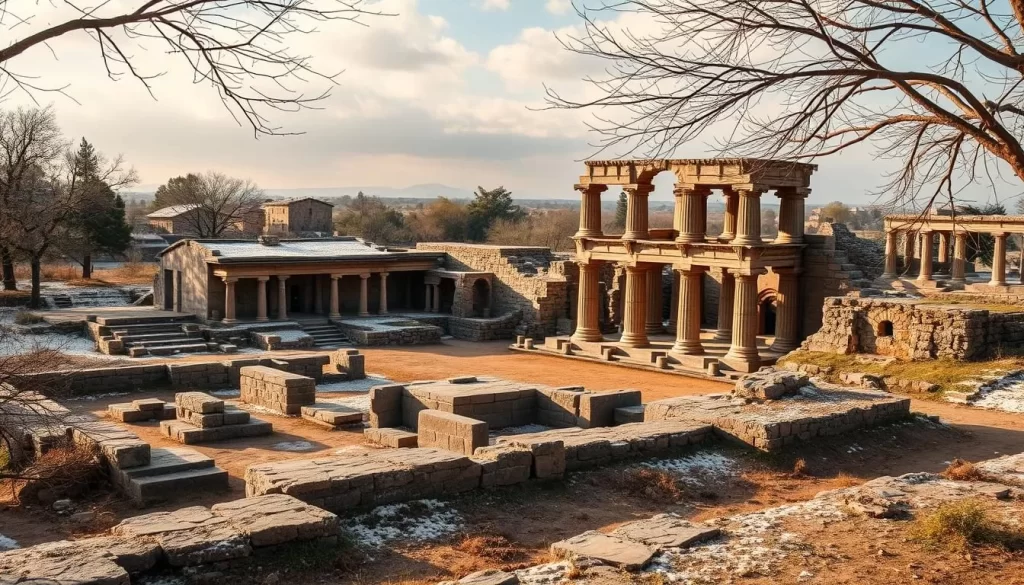
Some of the top destinations to visit in Karnataka during winter include Coorg (Kodagu) for its coffee plantations and trekking trails, Hampi for its UNESCO World Heritage ruins, and Bandipur and Nagarhole National Parks for wildlife viewing. Mysore’s palaces and gardens are also particularly enjoyable during this time, offering a serene and pleasant experience for travelers.
Summer in Karnataka: March to May
Summer in Karnataka, spanning from March to May, brings with it a unique set of experiences. While the temperatures soar, the state offers various opportunities for travelers to explore its natural beauty and wildlife.
Managing the Heat
The summer months see a significant rise in temperature across Karnataka. Temperatures often reach their peak in April and May, making it essential for visitors to plan their activities accordingly. Early morning and late evening are the best times to venture out.
Hill Stations and Coastal Retreats
To escape the heat, many turn to Karnataka’s hill stations and coastal retreats. Places like Coorg and Bababudangiri offer cooler climates, while coastal areas like Gokarna provide a refreshing respite. These destinations become particularly popular during the summer months.
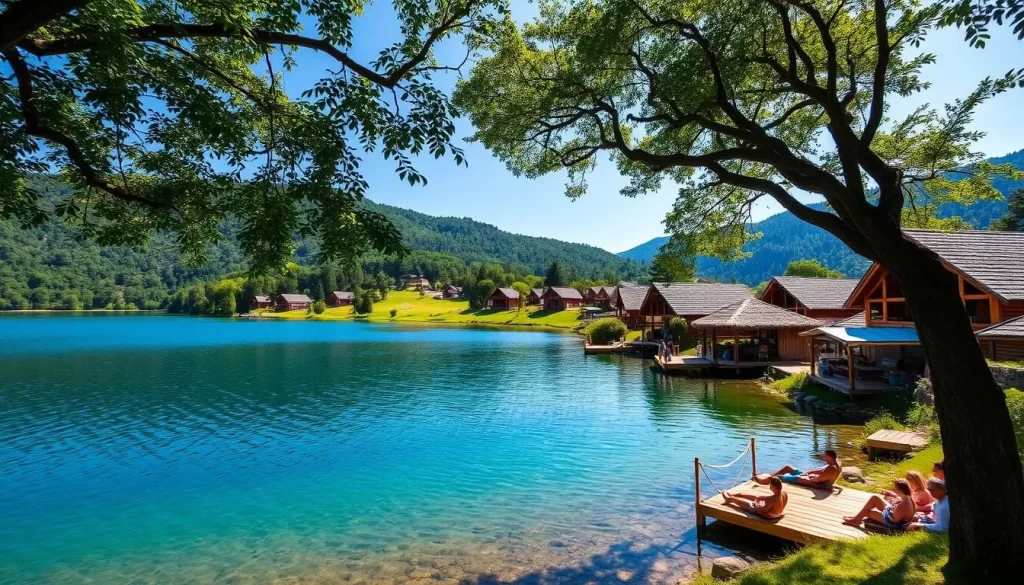
Summer Activities and Wildlife Viewing
Summer is an excellent time for wildlife viewing in Karnataka’s national parks. As water sources become scarce, animals congregate around the remaining water bodies, making them easier to spot. Bandipur and Nagarhole National Parks are particularly good for spotting elephants, tigers, and other wildlife. Additionally, water-based activities and adventure sports like white water rafting on the Kali River are popular during this time.
Karnataka, India: Best Months for a Weather-Savvy Trip
Karnataka’s diverse climate means that the best time to visit varies significantly across different regions. Understanding these variations is key to planning a trip that meets your expectations, whether you’re looking for cultural experiences, outdoor adventures, or simply a relaxing getaway.
November to February: The Ideal Window
The months from November to February are considered ideal for visiting Karnataka due to the pleasant weather conditions. During this period, the temperatures are moderate, making it perfect for sightseeing and outdoor activities across the state. It’s an excellent time to explore the historical sites, enjoy the natural beauty, and experience the local culture without the harsh weather conditions.
Shoulder Season Benefits: September-October and March
The shoulder season, which includes September, October, and March, offers several benefits for travelers. The crowds are smaller, and the prices for accommodations and tourist services are generally lower. While the weather can be a bit more unpredictable, these months can provide a more relaxed and cost-effective travel experience. For instance, March is a great time to enjoy the outdoors before the onset of the monsoon rains.
Weather Considerations for Different Regions
Karnataka’s diverse geography results in different climate conditions across various regions. For example, Coastal Karnataka experiences higher humidity and significant rainfall during the southwest monsoon. In contrast, the Bayaluseeme region, which includes cities like Bangalore and Mysore, has more moderate rainfall and greater temperature variations. Understanding these regional weather patterns can help you plan your itinerary more effectively.
| Region | Best Time to Visit | Weather Characteristics |
|---|---|---|
| Coastal Karnataka | November to February | Higher humidity, heavy rainfall during monsoon |
| Malnad Region | November to May | High rainfall, optimal visiting period outside monsoon |
| Bayaluseeme Region | October to February | Moderate rainfall, extreme temperature variations |
| Northern Karnataka | October to February | Drier climate, hotter summers |
Monsoon Season: June to September
The monsoon season in Karnataka, spanning from June to September, brings a mix of challenges and breathtaking landscapes. As you plan your trip during this time, it’s essential to understand the implications of the monsoon on travel and tourism.
Southwest Monsoon Impact on Karnataka
The southwest monsoon has a profound impact on Karnataka, bringing heavy rainfall that transforms the landscape. Peak rainfall periods can lead to temporary disruptions in transportation, making flexible travel planning crucial.
Lush Landscapes and Waterfalls
Despite the challenges, the monsoon season reveals Karnataka’s lush side, with waterfalls at their peak and landscapes turning a vibrant green. Destinations like Coorg become particularly attractive during this time, offering a serene and rejuvenating experience.
Travel Challenges and Precautions
To make the most of your monsoon travel in Karnataka, be prepared for potential travel disruptions and take necessary precautions. This includes packing appropriate rain gear, being mindful of food and water safety, and booking accommodations in advance for popular destinations.
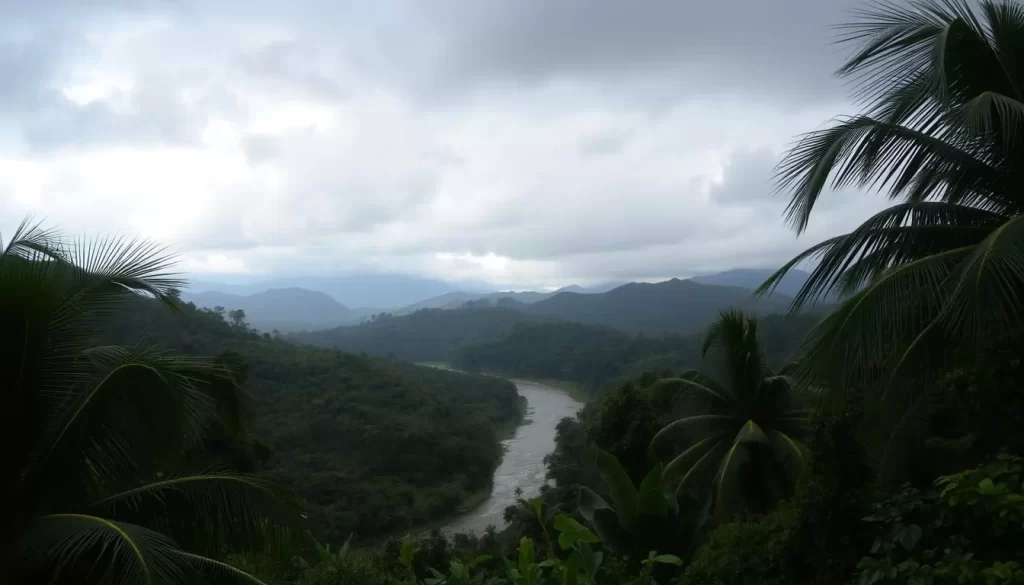
By understanding the monsoon conditions and planning accordingly, you can have a rewarding experience in Karnataka during this period. Building buffer days into your itinerary and staying informed about weather forecasts are valuable travel tips.
Planning Your Trip: Month-by-Month Guide
As you plan your trip to Karnataka, understanding the best times to visit can make all the difference. The state’s diverse climate means that the ideal time to visit depends on your preferences and activities. In the south, it never gets cold, which is in complete contrast to the freezing temperatures experienced in India’s far north, around the Himalaya region.
Peak Season vs. Off-Season Considerations
When planning your trip, it’s crucial to weigh the pros and cons of visiting during peak season versus off-season. Peak season, typically from November to February, offers pleasant temperatures and clear skies, making it ideal for sightseeing and outdoor activities. However, it’s also the busiest time, and popular destinations can be crowded. On the other hand, the off-season may offer better deals on accommodations, but some attractions might be closed or have limited access. Consider your priorities: if you prefer fewer crowds and lower prices, the shoulder season (September-October or March) might be the best time for you.
Aligning Weather with Your Travel Goals
Your travel goals should dictate the best time for your Karnataka trip. If you’re interested in attending festivals, winter is the best time, with numerous cultural events taking place. For those who prefer relaxation and rest, the pleasant winter weather is ideal for enjoying the state’s hill stations and coastal retreats. If you’re looking for adventure and don’t mind the heat, summer can be a good time for activities like trekking and wildlife viewing. Consider the things you want to do and the festival or events you want to attend when choosing your travel dates.
Packing Tips for Different Seasons
Packing appropriately is key to a comfortable trip. Here are some tips for different seasons:
- Winter (November-February): Light layers for daytime and a light jacket or sweater for evenings, especially in higher elevation areas.
- Summer (March-May): Lightweight, breathable clothing, sun protection (hat, sunglasses, sunscreen), and a reusable water bottle.
- Monsoon season (June-September): Quick-dry clothing, waterproof footwear, rain jacket or umbrella, and protective covers for electronics and valuables.
| Season | Essential Items |
|---|---|
| Winter | Light layers, light jacket or sweater |
| Summer | Lightweight clothing, sun protection, reusable water bottle |
| Monsoon | Quick-dry clothing, waterproof footwear, rain gear |
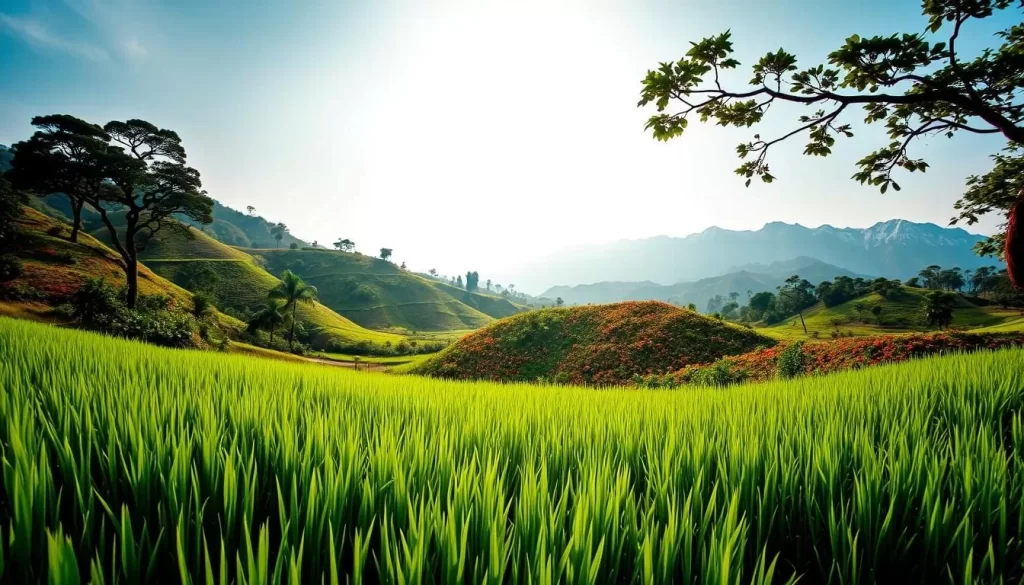
Conclusion: Making the Most of Karnataka’s Weather
Karnataka’s diverse climate means that the best time to visit varies depending on your preferences. The state offers year-round travel possibilities, with each season providing unique experiences for different types of travelers.
The winter months (November-February) remain the overall best time to visit for most travelers seeking a balance of comfortable weather and accessibility to attractions. Understanding regional climate variations within Karnataka allows for strategic itinerary planning.
Whether you’re interested in monsoon landscapes, cultural festivals, or outdoor activities, aligning your trip with the optimal seasonal windows can enhance your experience. With its diverse geography, Karnataka has something to offer every kind of traveler.
